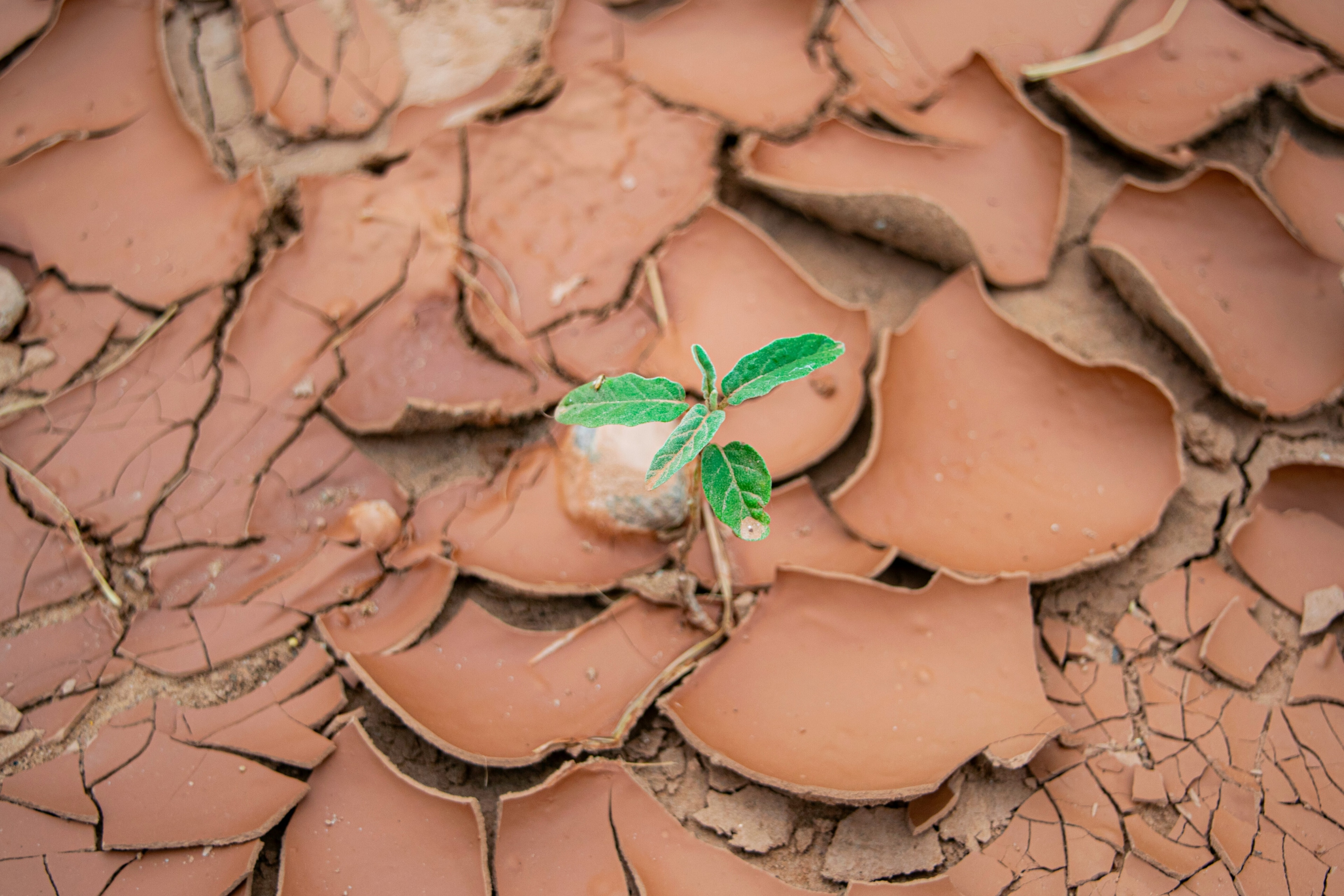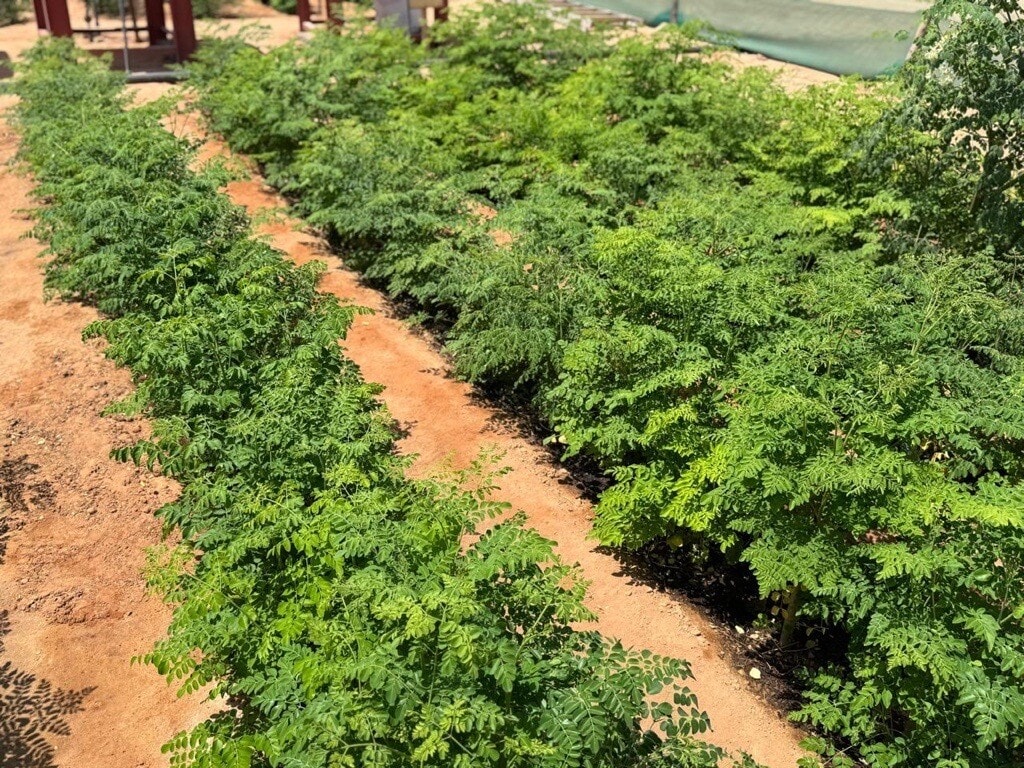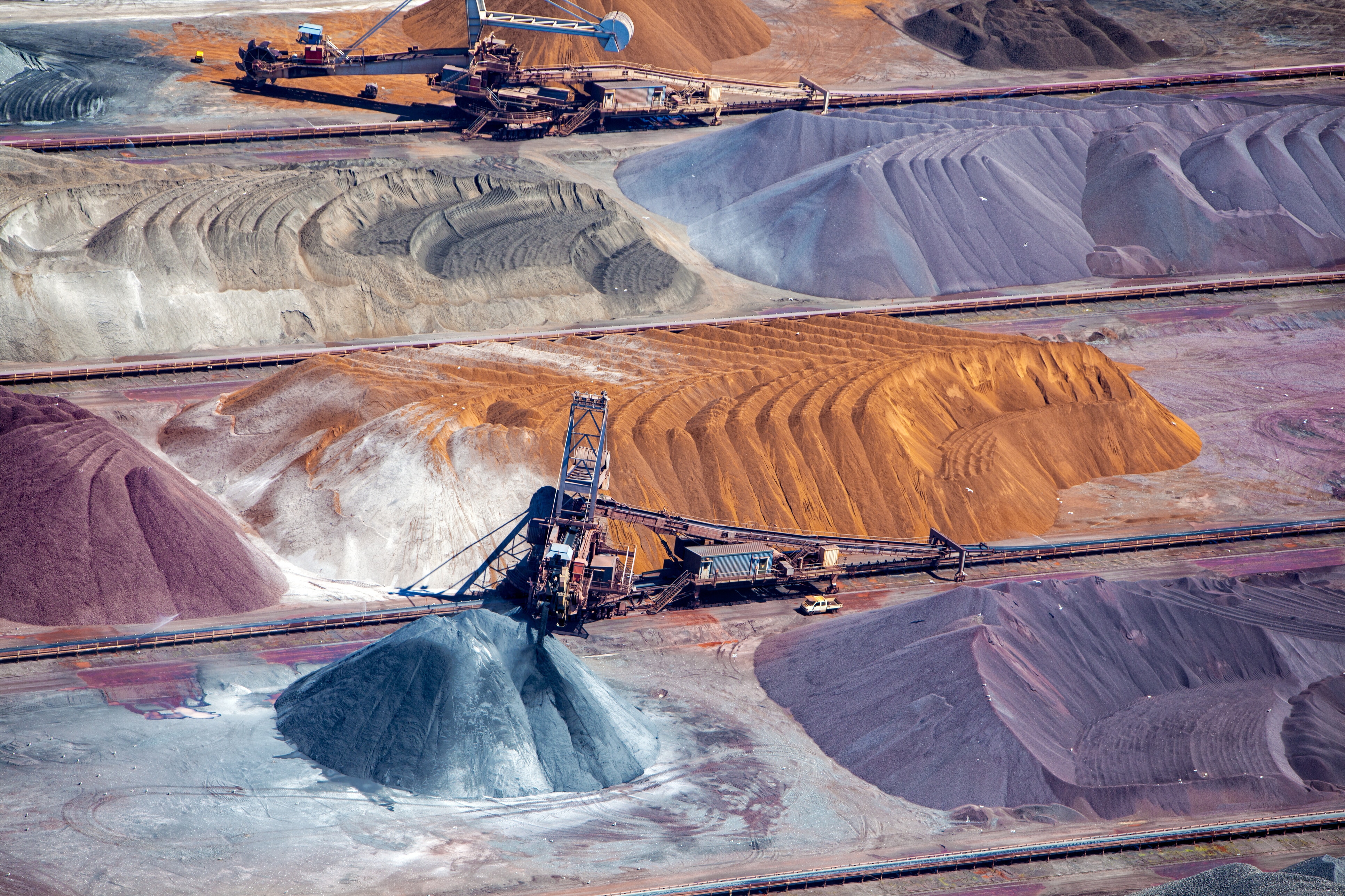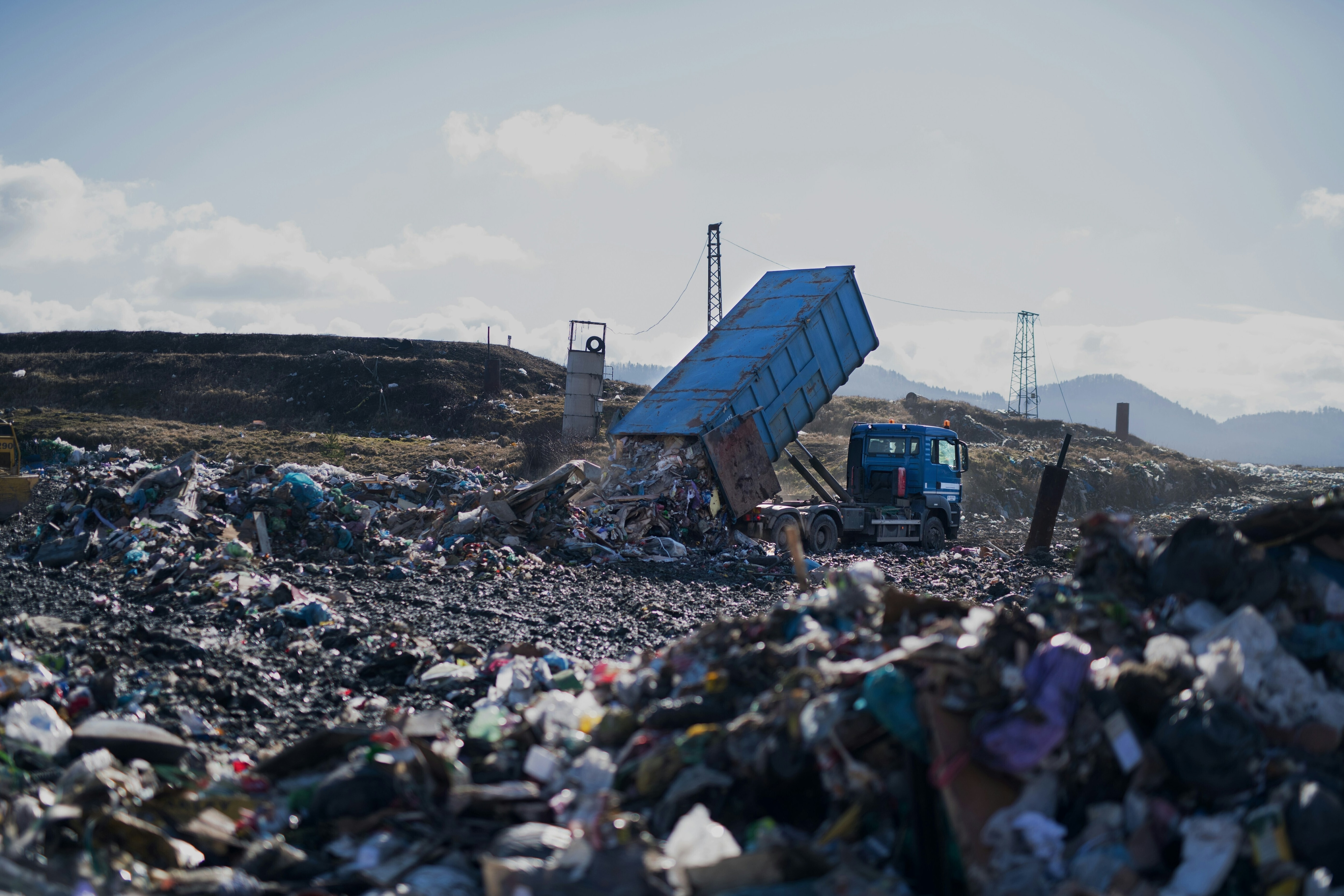How circular farming can build food security in arid lands

Can circular farming work in the desert? Image: Unsplash/Clark Wilson
- Circular farming can transform desert agriculture into a regenerative system.
- Local feed cultivation boosts food security and reduces emissions.
- A lauded approach from Tanmiah Food Company offers a scalable blueprint for other water-stressed regions.
Desert agriculture rarely takes centre stage in global conversations around climate change and sustainability.
In the Arabian Peninsula, food security, land degradation and water scarcity converge to form a pressing but often overlooked challenge. Saudi Arabia imports a substantial majority of its food and its arid climate offers little room for traditional farming.
Add to this the growing need for meat and poultry and the challenges only intensify. So, how can desert agriculture be regenerative in a place with almost no natural resources?
The answer lies in circular thinking, demonstrated by Tanmiah Food Company. Established in 1962, this Saudi company provides fresh poultry, processed proteins, animal feed and health products across the Middle East, operating with the conviction of creating sustainable value.
Irrigating a desert oasis with wastewater
Water is as precious as oil in Saudi Arabia and sustainable farming must grapple with extreme water scarcity. Tanmiah’s facilities produce approximately 2 million litres of wastewater daily from poultry farms and processing plants.
Rather than disposing of this effluent, Tanmiah built onsite wastewater treatment plants to recycle it for agricultural purposes. Treated wastewater that was once a liability is now an asset: approximately 680 million litres of water are treated and reused annually to irrigate trees and crops on the company’s lands, according to Tanmiah's analysis.
This massive water reuse conserves groundwater and reduces reliance on costly desalination processes.
These irrigated plantations are part of Tanmiah’s ambitious One Million Trees Initiative, a bold, waste-to-value afforestation programme launched to combat desertification and enhance carbon sinks.
This isn’t a traditional tree-planting campaign. It is a circular farming model that connects several waste, water, emissions and feed security challenges into one integrated solution.
As of the first quarter of 2025, Tanmiah deduced that over 550,000 trees were already planted in the ground – enough to sequester about 114,800 tons of carbon dioxide (CO2) equivalent emissions as they mature.
Once the million-tree goal is met, the carbon removal potential is projected to substantially reduce CO2 throughout the trees’ lifetimes. These plantations serve as a green oasis, enhancing local biodiversity and lowering the surrounding temperature by 3-7 degrees Celsius.
The Moringa “miracle” trees
Choosing which trees to plant was a crucial decision to ensure the maximum contribution to the circular economy model being established. Moringa oleifera, often called the “miracle tree,” is a drought-tolerant tree that thrives in harsh, dry climates.
This was the perfect tree to plant for several reasons.
Firstly, agronomists note that Moringa trees proliferate and yield abundant biomass (organic matter used as fuel) even in poor soils, making them ideal for the arid Saudi deserts where Tanmiah operates.
Secondly, its leaves are a nutrient-rich and halal (lawful to eat in Islam) source of animal feed.
By using this sustainable raw material crop for its poultry and livestock, Tanmiah aims to reduce its dependence on imported soy and corn.
Moringa is a sustainable, local alternative to imported feed, linking food production with land restoration and addressing one of the biggest challenges facing Saudi Arabia’s agricultural sector, where more than 90% of animal feed ingredients were imported as of 2024.
Thirdly, not only do these trees sequester CO2 as they grow but they have also been found to reduce methane emissions when included in cattle feed – a promising co-benefit for climate mitigation.
The resilience of this waste-to-value model stems from its integrated circularity, which leverages the synergy between waste, water, and trees. Diverse collaborations with international research partnerships have accelerated innovation and impact.
In 2024, Tanmiah expanded its innovation agenda by launching collaborative trials with leading Agri-tech partners, including Desert Control, Responsive Drip Irrigation (RDI) and Terraxy – to evaluate sustainable water and soil management technologies for Moringa cultivation.
These partnerships were instrumental in testing a range of advanced solutions tailored to arid conditions. Desert Control’s liquid natural clay technology was applied to enhance water retention in sandy soils.

At the same time, RDI’s subsurface irrigation system enabled precise, plant-responsive watering that significantly reduced water consumption. Complementing these efforts is Terraxy, a Saudi startup whose soil microbiome enhancement methods were piloted to improve nutrient uptake and root development.
Together, these trials demonstrated how integrating smart irrigation, soil amendment and regenerative agriculture technologies can transform desert terrain into viable farmland for nutrient-rich crops like Moringa.
This initiative reinforces Tanmiah’s commitment to sustainable feed innovation, land restoration and efficient resource use – core components of its long-term sustainability strategy.
Circular farming’s impact
Circular farming practices are delivering tangible environmental and food security benefits in arid regions. According to Tanmiah's data:
- Water savings: Around 680 million litres of wastewater are recycled annually, reducing freshwater use in farming. This is roughly equivalent to the daily water needs of tens of thousands of people, repurposed for growing trees and fodder in the desert.
- Afforestation and carbon capture: As of the first quarter of 2025, more than 550,000 trees have been planted, sequestering 114,800 tons of CO2 and creating greenbelts to combat desertification.
- Food security gains: Locally grown feed, such as Moringa, reduces feed import reliance, advancing Saudi Arabia’s 90% food self-sufficiency goal (in the poultry sector) by 2030 and building resilience against global supply disruptions.
Advancing towards Vision 2030
Tanmiah’s sustainability efforts support broader national and global objectives under the Saudi Green Initiative, an anchor of Vision 2030 aiming to plant 10 billion trees.
The company was also recognized at the 2024 UN Convention to Combat Desertification (COP16) in Riyadh as a corporate partner in Saudi Arabia’s afforestation efforts.
Crucially, the initiative also aligns with the Kingdom’s goal of achieving net-zero greenhouse gas emissions by 2060 and its Circular Carbon Economy strategy.
A blueprint for arid nations
Beyond Saudi Arabia, Tanmiah’s integrated waste-to-value model provides a replicable blueprint for water-challenged countries and desert climates seeking sustainable agricultural solutions. Livestock farming worldwide often faces criticism for its significant resource footprint and pollution.
By integrating waste recycling, agroforestry and climate-smart feed cultivation, the company demonstrates how livestock farming can evolve into a more circular regenerative system.
As demand for sustainable food systems grows, the private sector plays a crucial role in aligning profitability with environmental innovation.
Thoughtful approaches to livestock farming can help mitigate ecological impact while creating valuable environmental assets – clean water, healthier soil and resilient food production.
When agriculture must produce more with fewer resources, integrated waste-to-value models provide a compelling example of how sustainable livestock farming can thrive, even in the most challenging environments.
Don't miss any update on this topic
Create a free account and access your personalized content collection with our latest publications and analyses.
License and Republishing
World Economic Forum articles may be republished in accordance with the Creative Commons Attribution-NonCommercial-NoDerivatives 4.0 International Public License, and in accordance with our Terms of Use.
The views expressed in this article are those of the author alone and not the World Economic Forum.
Stay up to date:
Circular Economy
Related topics:
Forum Stories newsletter
Bringing you weekly curated insights and analysis on the global issues that matter.
More on Circular EconomySee all
Jack Barrie
December 15, 2025







